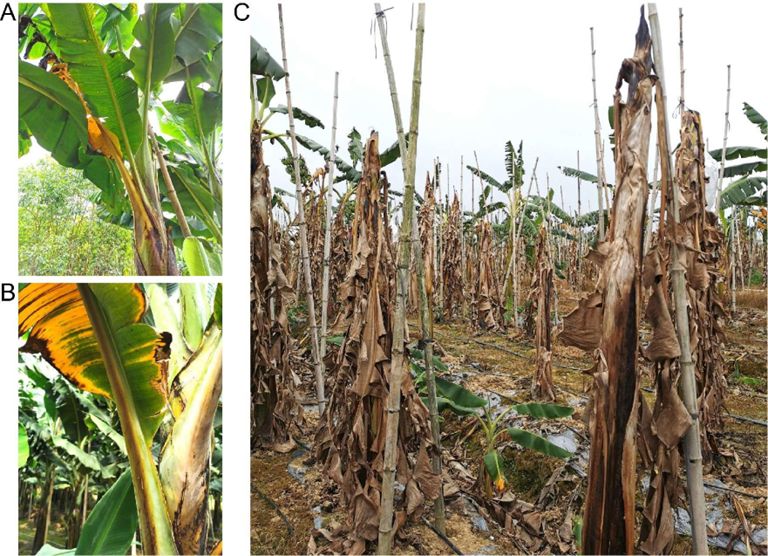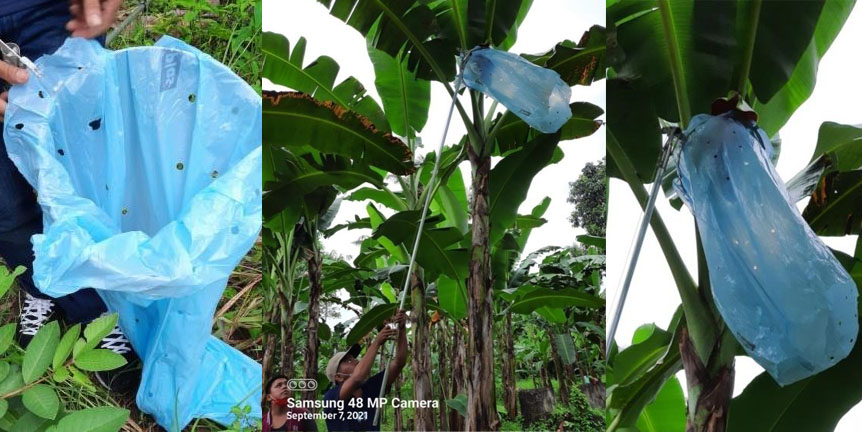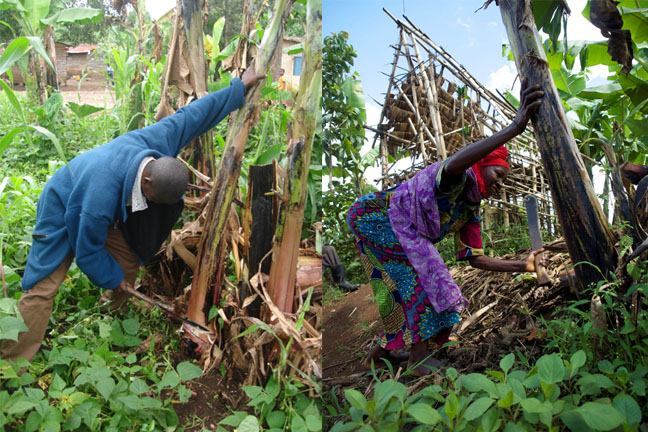Besides diseases caused by fungal pathogens, banana diseases caused by bacteria also have an adverse impact on food security and income especially for smallholders. In recent years, there have been reports of an upsurge of bacterial diseases, mainly in cooking bananas. Observably, the impact of banana bacterial disease prevalence and seriousness differ in the different banana growing regions. Southeast Asian countries such as Indonesia, Malaysia and Philippines have reported serious incidences of banana blood disease and MOKO which are caused by the bacterial Ralstonia syzygii subsp celebensis and Ralstonia solanacearum, respectively. Other important banana bacterial wilt and rot diseases are caused by Xanthomonas sp, Erwinia sp., Dickeya sp. and Klebsiella varicola have been reported in Africa and China.
Researchers from Australia, China, India, Indonesia, Malaysia, Uganda and Philippines shared information and discussed on the impact of such diseases in an online workshop on bacterial diseases in banana on 29 November 2022. The workshop was organized by International Tropical Fruits Network (TFNet) with partners Malaysian Agricultural Research and Development Institute (MARDI) and the Fruit Tree Research Institute, Guangdong Academy of Agricultural Science (FTRI, GDAAS) China.
The main aim of the workshop was to share information among researchers and stakeholders on the recent status of banana bacterial diseases in Asian and African countries, current research focus to elucidate pathogen and disease characteristics and management strategies to combat the diseases. The workshop was also intended to discuss research priorities and possibilities of joint projects and collaborations among research institutions and stakeholders
Attended by more than 300 participants from 30 countries, the session provided some indication of the gravity and impact of bacterial diseases of banana if not well managed and contained.
While bacterial diseases on banana in Australia are manageable with strict biosecurity regulations to prevent entry, the other countries are responding to the challenges with different approaches. Dr. Nanditha Pantania from the Queensland Department of Agriculture and Fisheries reported that in Australia, there are cases of corm rot caused Dickeya sp occurring in Cavendish bananas, followed by, to a lesser extent fingertip rot caused by a few associated bacteria including Dickeya spp. and Klebsiella spp. However, both diseases can be managed through good field practices.
Dr. Yunhao Sun, researcher at the Innovative Institute of Plant Heath, China, highlighted the pathogen profile, comparative genomic analysis and microbial interaction network of Klebsiella variicola, which causes banana sheath rot, mainly on the Cavendish variety. Bacterial diseases in bananas are now a major concern in China.

In Indonesia, Malaysia and the Philippines, MOKO disease (Bugtok in the Philippines) and BBD (banana blood disease) caused by Ralstonia solanacearum and Ralstonia syzygii respectively are serious diseases affecting mainly cooking bananas varieties. Disease control is mostly by field management practices. Dr. Lorna Herradurra from the Philippines Bureau of Plant Industries shared her experience in disease control through field sanitation and control of insects such as wasps, bees and thrips that visit the male inflorescence. Bagging the inflorescence and debudding it after 14 to 15 days are normally practiced to reduce infection. Dr. Catur Hermanto from the National Research and Innovation Agency, Indonesia also discussed inflorescence bagging and debudding to control insect transmission, plus other field practices that include use of disease-free planting materials and field sanitation practices. Dr. Rozeita Laboh from the Malaysian Agricultural Research and Development Institute cited that even though incidences of BBD have decreased in the last few years due to better field management practices, studies on the use of induced systemic resistance (ISR) using microorganisms and the use of bacteriophage have potential in curbing disease spread. In diagnostics, the development of a banana blood disease detector using LAMP (loop mediated isothermal amplification) bridged with carbon particles flocculants will be a useful tool for early disease detection.

Dr. Loganathan Murugan from the National Research Centre for Banana, ICAR, India related his experience with rhizome rot/soft rot caused by Pectobacterium caratovorum as a serious disease affecting mostly Cavendish cultivars in Southern India. Besides the use of antibiotics, chemicals, clean planting materials and growing short-term intercrops, bioformulations (plant growth-promoting rhizobacteria) are also included as control measures.
Alliance of Bioversity and CIAT researcher, Dr. Guy Blomme, who is based in Central Africa, illustrated the effectiveness of the innovative SDSR (Single diseased stem removal) technique to control Xanthomonas wilt in cooking bananas, besides other field practices such as male bud removal and sterilization of farm tools.

Generally, the workshop sent a signal of concern that the global impact of bacterial diseases on bananas, especially on cooking bananas can be far-reaching. Research priorities to mitigate disease impact need to be streamlined by conducting surveys and identifying the causal pathogens, studying dynamics of disease spread, incorporating appropriate technologies and field practices, and using molecular approaches to breed for resistant varieties.
The workshop indicated that, with current breeding work to produce resistant cultivars using molecular techniques, such as CRISPR Cas-9 still in progress, the immediate and most pragmatic approach is to fine tune, strengthen and integrate current best field management practices, use of clean planting materials and proven bioformulations. Integrating and combining all control and management techniques are therefore imperative.
Regional collaboration among researchers and stakeholders in the industry is also key to resolve challenges posed by bacterial diseases of banana.
REPORT
The is available for download here. You may also scroll through it below:

